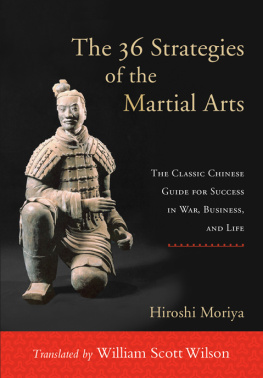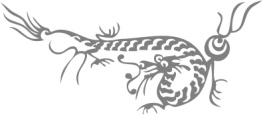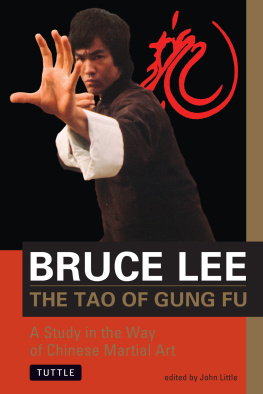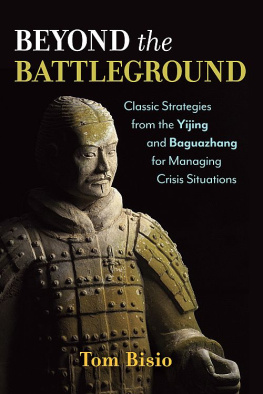ABOUT THE BOOK
The 36 Strategies of the Martial Arts is a classical collection of Chinese maxims on understanding, engaging, and defeating your enemy. The origin of the collection is unknown; however, the text is a synthesis of various military maxims, political expressions, and even folk sayings, some of which are from sources that date back 1,500 years. Professor Hiroshi Moriya, a Tokyo-based authority on Chinese culture and philosophy, supplies clear and succinct explanations of each maxim and illustrates them with examples not only from Chinese literature and history but also from events in Europe and modern business affairs. This book will resonate with anyone interested in a classic approach to psyching out an opponent and emerging victoriousin martial arts, business, sports, or politics.
WILLIAM SCOTT WILSON is the foremost translator into English of traditional Japanese texts on samurai culture. He received BA degrees from Dartmouth College and the Monterey Institute of Foreign Studies, and an MA in Japanese literary studies from the University of Washington. His best-selling books include The Book of Five Rings, The Unfettered Mind, and The Lone Samurai, a biography of Miyamoto Musashi.
Sign up to receive our Martial Arts newsletter, which includes information about new books, special offers, discounts, and more.

Or visit us online to sign up at shambhala.com/emartialarts.
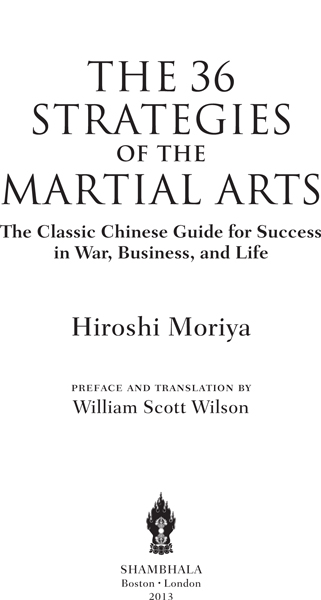
Shambhala Publications, Inc.
Horticultural Hall
300 Massachusetts Avenue
Boston, Massachusetts 02115
www.shambhala.com
2008 by William Scott Wilson
Based on the revised Japanese edition of Heiho sanjuroku kei 2004 by Hiroshi Moriya
Cover art: Crouching archer, Terracotta, courtesy of Qin Shi Huang Terracotta Warriors and Horses Museum. Photograph by Leo Hilber.
All rights reserved. No part of this book may be reproduced in any form or by any means, electronic or mechanical, including photocopying, recording, or by any information storage and retrieval system, without permission in writing from the publisher.
Library of Congress Cataloging-in-Publication Data
Moriya, Hiroshi, 1932
[Heiho sanjurokkei. English]
The 36 strategies of the martial arts: the classic Chinese guide for success in war, business, and life / Hiroshi Moriya; foreword and translation by William Scott Wilson.
pages cm
Includes bibliographical references.
eISBN 978-0-8348-2889-6
ISBN 978-1-59030-992-6 (pbk.: alk. paper)
1. San shi liu ji. 2. Military art and scienceChina. I. Wilson, William Scott, 1944 II. Title. III. Title: Thirty-six strategies of the martial arts.
U101.S19M6713 2013
650.1dc23
2012043443
CONTENTS






Legend has it that when Yamamoto Kansuke one of Shingens most important vassals, in the presence of the warlord and his retainers, suddenly challenged him to a duel. Kansuke, a strong swordsman of the Kyoto style, had only one eye, was lame, and was missing a few of his fingers. He was also a ronin not originally from Shingens fief, and his loyalty, in the eyes of the challenger, was dubious.
This challenge was unexpected, but Kansuke readily accepted it, insisting, however, that it be called a battle rather than a duel. Kansuke further insisted that, in light of his physical disabilities, this battle should be fought in a small boat that was anchored offshore in a nearby lake. This would balance the odds, since both men would be restricted in their movements during the fight. Despite some consternation among the retainers, Shingen quickly agreed to these conditions.
Kansuke and Shingens vassal were taken out to the anchored boat in another small craft, and they climbed in. Without warning, Kansuke suddenly pierced a hole through the bottom of the boat with the scabbard of his sword, leapt back into the transport craft, and pushed it away. The vassal, who could not swim, now found himself alone in a slowly sinking boat with no way of escape. At this juncture, Kansuke threw the man a rope and pulled him to shore, saving his life.
Watching this affair intently from shore, Shingen quickly fathomed the depth of Kansukes strategy and immediately retained him, doubling the stipend that had been initially offered.
In this battle, Kansuke had essentially employed three strategies. First, he had won the battle without fighting, thus protecting his own life. At the same time, he had not injured his opponent, who would now likely become his ally. Finally, before employing the first two strategies, Kansuke had taken into account all of the conditions of the situation: his own physical disabilities, the vassals simple reliance on his swordsmanship, Shingens needs and values, and the environment in which the battle would take place. Thus, no blood was shed, and Shingens highly respected vassal lived to serve him. Kansuke henceforth served as Shingens respected strategist, helping him to rise as one of the most powerful and feared warlords of his time.
These three concepts are fundamental to Chinese (and subsequently Japanese) military thought, and they run like currents through The 36 Strategies of the Martial Arts.

This book consists of thirty-six strategies arranged under six headings, thus mirroring the hexagrams in the I Ching, or Book of Changes. The original text is quite brief: each strategy is given a title, usually of four Chinese characters, providing the reader with a mnemonic device for the meaning of the following strategy. The strategy itself consists of several lines of classical Chinese, often containing a short phrase from the above-mentioned Book of Changes, which may be considered the shadow text of this work. The translation of this strategy appears here in italics at the head of each chapter and is followed by further explanation by Professor Hiroshi Moriya, first a modern rendition, then a more detailed explanation.
In the various editions of this work that have appeared over time, each chapter has been expanded by one or more explanations or illustrations taken from Chinese history. Professor Moriya has followed this precedent, supplying clear and succinct explanations and examples not only from Chinese literature and history but also from events in Europe and modern business affairs, covering a broad spectrum of human activity and conflicts.
The origins of the original 36 Strategies are unclear: tradition has cited a certain Tan Tao-chi of the fifth century A.D. as the author, but the text is more likely a synthesis of various military maxims, political expressions, and even folk sayings from over a thousand years before. The sections from the
Next page
